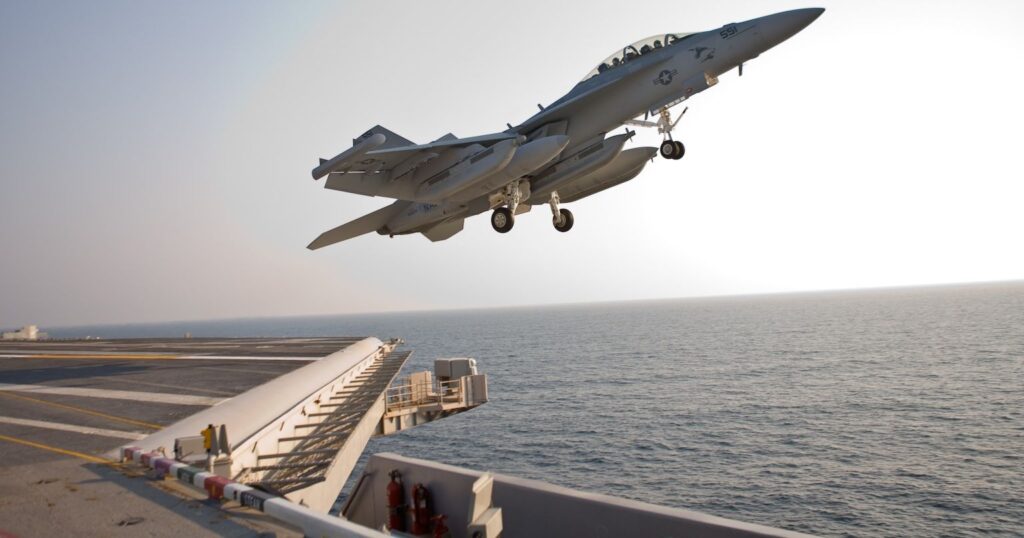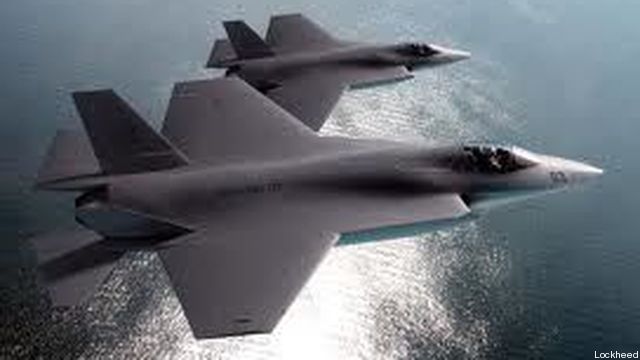F-35’s Stealth, EW Not Enough, So JSF And Navy Need Growlers; Boeing Says 50-100 More
Posted on
WASHINGTON: Stealth is being outpaced by software, radar and computing power, so electronic warfare and cyber attacks are growing in importance. While the F-35 may possess excellent — if circumscribed — electronic attack and cyber capabilities, it needs help from the Navy’s EA-18G Growler electronic attack aircraft.
That means, Boeing and the Navy are arguing, that the Navy needs more of the electronic attack versions of the F-18, known as the Growler, to fly with the F-35 on the first day of combat to protect the F-35 and to help protect the service’s precious carrier strike groups.
“The Growlers were highlighted as a priority need by the Chief [of Naval Operations, EW enthusiast Adm. Jonathan Greenert] in his request to Congress. Our assessment is that the DoD needs 50 to 100 additional Growlers, so we will continue to work with Congress to add 22 Growlers to the Fiscal Year 2015 budget and later with the Navy for future Growlers to be inserted into the baseline Fiscal Year 2016 budget in the next cycle,” Mike Gibbons, the Boeing vice president in charge of the F/A-18 and EA -18G programs, said in a statement.
I spoke with an industry source about the assertions we’ve heard from senior Navy and Boeing officials that the F-35 fleet cannot expect to fly its attack mission at the start of a war and survive without help from Growlers.
“The notion they can go in alone and unafraid is just plain wrong,” said this source. “The threat is doing two things. Their search radars are at VHF [frequencies] and getting lower, and with computer processing power they are getting much better. They can see them [fifth generation attack aircraft] hundreds of miles away, just like any other aircraft.”
Infrared sensors, low and variable frequency radar, and networked radar and other sensor systems built or used by Russia and China make spotting a stealthy aircraft a virtual certainty, this source said.
This certainly doesn’t jibe with what one hears from allied officials and from JSF proponents who argue the F-35, especially working closely with the F-22, can penetrate virtually any defense and is best suited to handling the daunting anti-access/area denial environment. I reported back in 2009 that the F-35 is the only US aircraft built to the requirement that it be able to defeat the most advanced air defense systems, such as the Russian’s S-400s. But the industry source said that the F-35 would be vulnerable to sophisticated ground-based systems — unless accompanied by Growlers, who would be able to use their powerful wide-frequency emitters to blanket a wider spectrum of threats.
F-35s “can jam X-band frequencies, but once they do, that’s all they’re focused on,” leaving them vulnerable to detection by infrared, ELF and lower spectrum radar, the industry source said.
So the Navy has already indicated it wants another 22 Growlers, having put them in its unfunded wish list. But the service did not possess the conviction necessary to add more money to its regular budget to get them. So, while Boeing argues that the Navy and the Air Force need more Growlers — and Congress has certainly seemed relatively willing to supply some — the basic question arises, If these aircraft are needed so badly, then why is the Navy only now going public with the arguments to justify their purchase? (OK, it could be that some highly classified war games done as part of Air-Sea Battle planning demonstrated the need, or classified research done by Boeing using government data might have.) But if the Navy really needs these aircraft then they should make them part of their regular budget request.
Meanwhile, Boeing and Lockheed’s supporters on the Hill have drafted competing letters arguing for either the Growler or the F-35. If the Navy and Boeing are right about the Growler’s complementary capabilities, then this should not be a zero sum game for either side. Congress should consider pulling money from other programs if this really is a question of America winning in a serious wide-spectrum conflict.
Subscribe to our newsletter
Promotions, new products and sales. Directly to your inbox.


